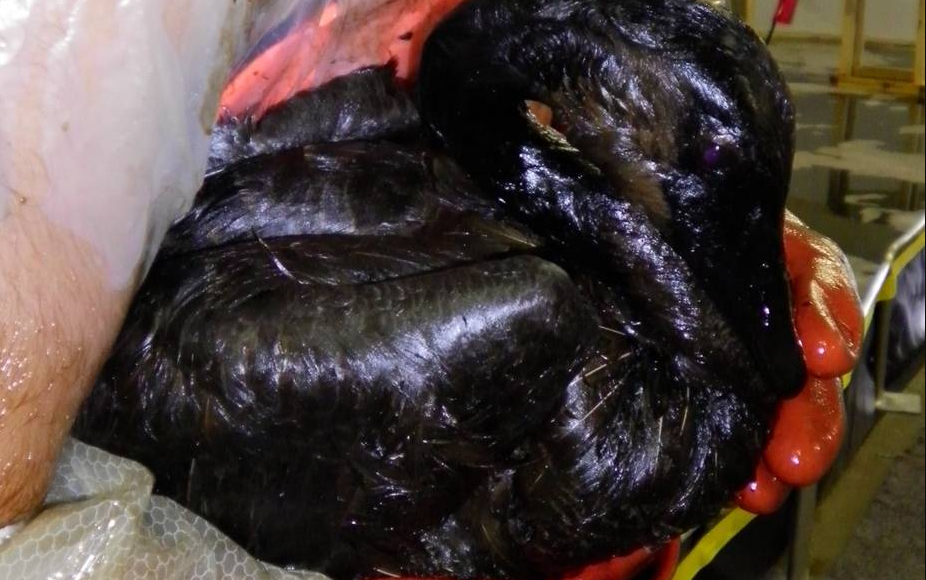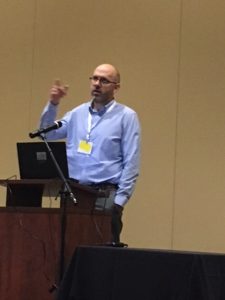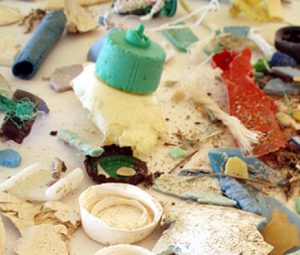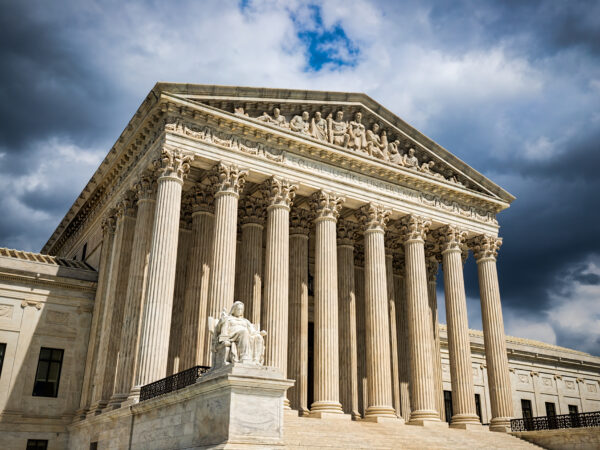
Great Lakes scientist says more scrutiny is needed
A leading Great Lakes scientist has put a spotlight on increased oil transport in the Great Lakes region, saying more scrutiny is needed.
Oil spills and hydro carbon transport are “not on people’s radar the way it could be,” says Purdue University Professor Tomas Hook.

Purdue Professor Tomas Hook speaking at the State of Lake Michigan Conference, courtesy of Gary Wilson
Hook says, “We need to understand the environmental risks of spills prioritizing where spill risks are high and where they overlap with environmentally sensitive areas.”
Hook was speaking with Great Lakes Now in a wide-ranging interview at the State of Lake Michigan conference in Green Bay, Wisconsin last week. The conference is conducted by the International Association for Great Lakes Research (IAGLR) where Hook is the recent past-president.
Hook suggested developing physical models of how oil is transported and what types of animal and plant life may be impacted by a spill.
He said there is a need to “assess our abilities to respond to spills to limit impacts on the environment, human-health and socio-economic institutions.”
Asked to comment on the risk of increased oil transport in the region, FLOW’s Liz Kirkwood told Great Lakes Now that “the public should keep a very close eye on oil transport and refineries in the Great Lakes.” Kirkwood is Executive Director of the Traverse City non-profit.
Kirkwood said they “continue to put our greatest natural resources at risk and unfairly burden the public to clean up the inevitable spills that will continue to occur.”
Asian carp, pharmaceuticals and Southern Lake Michigan
On the threat from Asian carp Hook is circumspect.
“It is still an open question as to how well Asian carp may establish in the Great Lakes and what their impact may be on other biota,” Hook said.
“Various analyses have assessed these questions and I think conclusions are not consistent.”
Hook said it’s important to keep Asian carp out of the Great Lakes but with invasive species “management is largely about reducing risks” because they can’t be eliminated.

Microplastics, courtesy of noaa.gov
He identified pharmaceuticals going into the lake as an increasing threat and said the decline in alewives could impact salmon and trout.
Hook said the large number of people living in southern Lake Michigan – southern Wisconsin, greater Chicago and Northwest Indiana – continue to stress the lake. The combined population is 9.5 million.
“There have been investments in environmental cleanup and habitats have improved but it’s still stressed by the huge population,” Hook said.
“There are legacy effects in coastal areas in Indiana and Illinois that have been degraded to the point that it’s going to take decades if not centuries to return to what they were naturally,” according to Hook.
Bullish on Great Lakes science
Hook told Great Lakes Now that the state of the region’s science “is strong” even in the absence of “tons of funding.” He said “scientists are working in all sorts of areas from ecology to physical science to chemistry to the social aspects of managing the Great Lakes.”
To support his claim on the strength of Great Lakes science, Hook said this year’s IAGLR convention in Detroit was the largest in the association’s history.
Great Lakes Now asked Hook how the region’s scientists are coping with the reduced role of science in the Trump administration. The U.S. EPA is being downsized, funding cuts for the Great Lakes have been threatened and EPA Administrator Pruitt has been consulting more with industry groups than environmental advocates.
Hook didn’t criticize the Trump administration. Instead, he listed steps being taken to support science.
He said, “I don’t think working with industry is a bad thing necessarily. There are a lot of environmental studies where it makes sense to partner with industry.”
On the threat of reduced federal funding for the Great Lakes, Hook said the question of how to handle it is mixed in the region.
Some scientists are willing to be funding advocates; others are not.

Professor Don Uzarski, courtesy of cmich.edu
Central Michigan University Professor Don Uzarski has been successful at securing federal funds for Great Lakes research, but he says he understands the reluctance of some scientists to advocate for funding. “As scientists, we are trained to be unbiased, and entering into political discussions takes us far from our comfort levels,” Uzarski told Great Lakes Now.
Purdue’s Hook said “IAGLR is trying to highlight the value of the Great Lakes, the value of the Great Lakes research and make sure that legislatures and the public are aware of the work that scientists do and the importance of the lakes themselves.”
In 2018 IAGLR scientists meet in Toronto and the State of the Lake conference will focus on Lake Superior.




